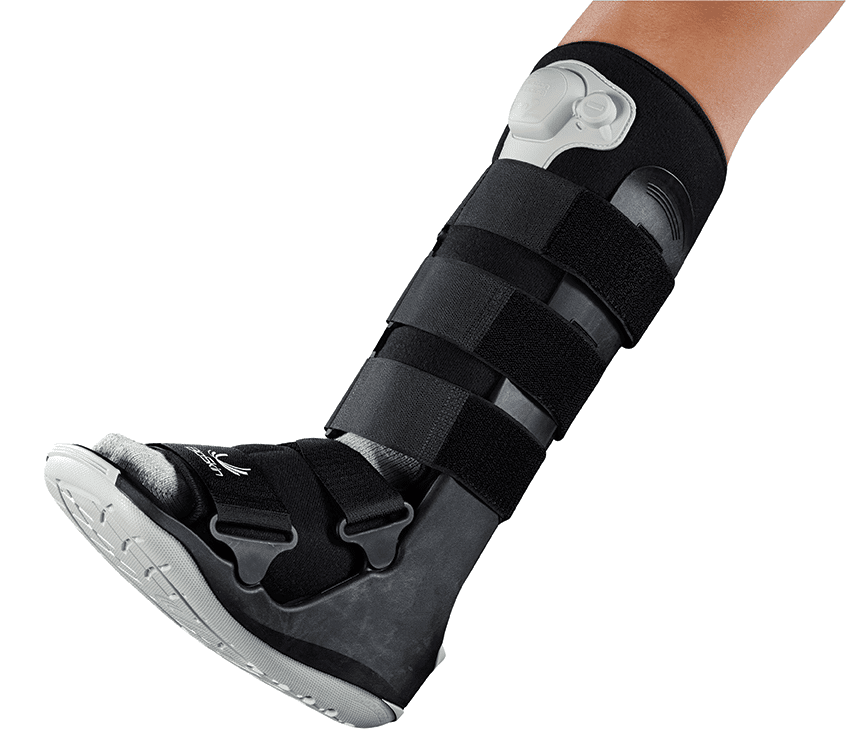Ankle Instability: Causes, Symptoms and Treatments
Ankle instability is the condition associated with weak ligaments in the upper foot leading to the ankle frequently buckling when weight is applied, often when running or walking on uneven surfaces. In some cases, this can happen when you are simply standing. There are a variety of treatments that can be used to correct and manage this condition, including medication, physical therapy and exercise, and wearing an ankle brace for instability.
Causes
Ankle sprains that have healed correctly are often the culprits behind chronic ankle instability. Ankle sprains stretch or tear the ligaments in your ankle. Instability is often caused when the ligaments remained stretched out after healing, resulting in weaker structures around the ankle. Ballet dancers, gymnasts and those involved in sports like basketball, soccer or football (all activities that involve lots of pivoting, balancing, jumping and quick weight shifts) are at higher risk for developing chronic ankle instability as are those who suffer repeated ankle sprains.
Symptoms
Common symptoms of ankle instability include:
● The feeling of the ankle ready to give way.
● Pain on the outside of the ankle, ranging from intense to a dull ache.
● Tenderness to the touch, stiffness and swelling.
● Occasionally “tweaking” your ankle from mild activities like walking.
● A tendency to roll or lean towards one side when walking.
● Sore ankles after working out.
Treatments and Protection
R.I.C.E
R.I.C.E. is an acronym – Rest, Ice, Compression and Elevation. The R.I.C.E. treatments are recommended whenever you feel pain or soreness in your ankle.
Rest equates to recovery time for your body and allows the ligaments in the ankle a brief respite from the stresses of supporting your weight. If your ankles are sore, take a few days off and if there is mild to moderate pain, be careful and take 1-2 weeks off from strenuous activity.
Applying a cold compress/ice pack to your ankle for 10 minutes at a time, two to three times a day, will help reduce pain by combating swelling and inflammation.
Compression also aids in the prevention of swelling around the ankle. Wrap the ankle with athletic tape or use a compression ice wrap to compress the joint and simultaneously apply cold therapy.
Anti-inflammatories
Anti-inflammatory medications such as ibuprofen or aspirin can be taken if you experience pain, tenderness or swelling.
Increase Flexibility and Strengthen the Ankle
By increasing flexibility in your ankle and strengthening the structures around it, you can improve your stability. There are a variety of exercises that increase range of motion, improve balance and strengthen the surrounding muscles. For example, trace the letters of the alphabet with your foot, making small to large circles inwards and outwards. Additionally, stand on one foot to improve balance or, if that’s too easy, stand on one foot on a balance ball and strengthen with an elastic band.
Wearing An Ankle Brace for Instability
If instability bothers your throughout the day when walking, running or even standing, an ankle brace for instability can provide the support you need. Lighter, more flexible ankle sleeves are recommended for daily use. If you are an athlete who wants to maintain performance or if you simply have a more active lifestyle, wearing an ankle brace for instability that provides moderate protection can be a huge help. Ankle braces for instability work to stabilize the joint while walking or running. Additionally, these devices may help to prevent another ankle sprain that could bring on chronic ankle instability. In acute cases, your doctor may prescribe a custom-made ankle brace for instability.
Surgery
In severe cases, a physician may recommend surgery to repair the damaged ankle ligaments. As an invasive procedure, surgery is usually a last resort for ankle instability.







